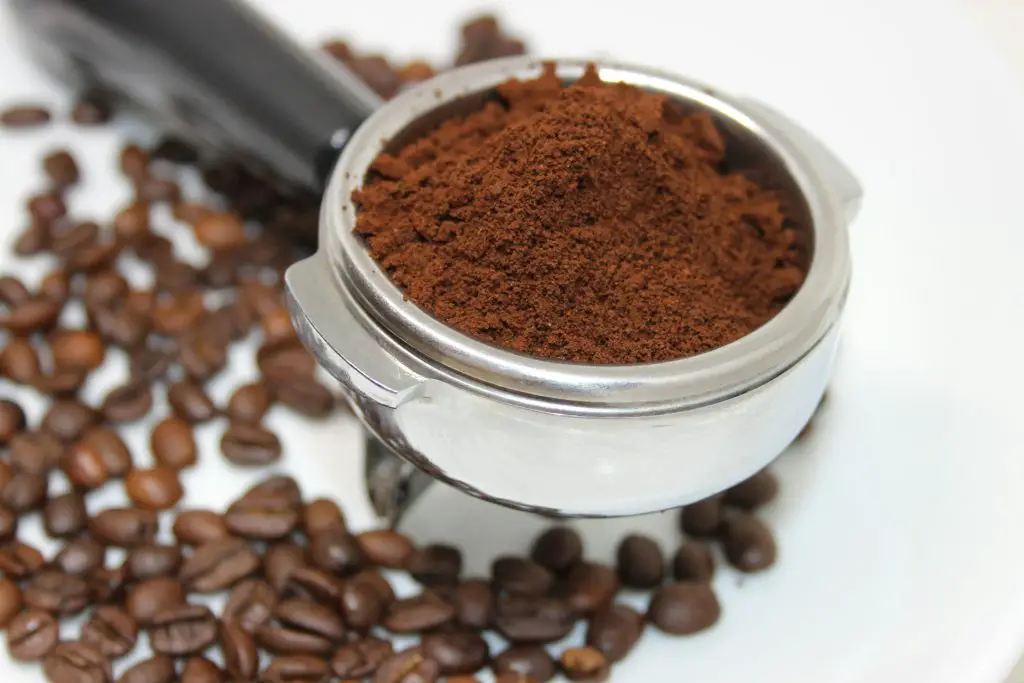Coffee is one of the most beloved beverages in the world, known for its rich flavor and energizing properties. While coffee grounds are often discarded as waste after brewing your morning cup of joe, they hold a surprising array of uses beyond just making a delicious beverage. In this article, we will explore what coffee grounds attract and delve into the fascinating ways in which they can be repurposed for various purposes.
Insects and Pest Control
One of the most unexpected uses for coffee grounds is as a natural insect repellent and pest control solution. Coffee grounds have a strong, earthy aroma that can deter many common garden pests such as ants, snails, and slugs. Scatter coffee grounds around plants in your garden to create a barrier that these pests are less likely to cross. Additionally, coffee grounds can be sprinkled in areas where you want to keep ants away, like around doorways and windows.
The caffeine content in coffee grounds can also be lethal to certain insects, such as fruit flies. Mixing coffee grounds with water to create a coffee “slurry” can be an effective way to attract and kill fruit flies that may be buzzing around your kitchen.
Earthworms
Coffee grounds can attract earthworms, which are highly beneficial for garden soil health. Earthworms are essential for aerating the soil and breaking down organic matter, which in turn improves nutrient availability for plants. The texture and composition of coffee grounds make them an attractive food source for earthworms.
To utilize coffee grounds for earthworm attraction, simply add them to your compost pile or directly to the soil in your garden. As earthworms consume the coffee grounds, they enrich the soil with their castings, which are nutrient-rich and enhance the overall fertility of the soil.
Composting
Coffee grounds are an excellent addition to your compost pile or bin. They are considered a “green” or nitrogen-rich material, which helps balance the carbon-to-nitrogen ratio in your compost. The organic matter in coffee grounds provides essential nutrients to your compost, including nitrogen, potassium, and phosphorus.
The decomposing coffee grounds also introduce beneficial microorganisms to your compost, aiding in the decomposition process and producing nutrient-rich compost for your garden. Be sure to mix coffee grounds with other compostable materials like vegetable scraps, leaves, and grass clippings to create a well-balanced compost.
Fungi and Mushrooms
Coffee grounds can be a fantastic substrate for cultivating edible mushrooms, such as oyster mushrooms. The rich, organic material in coffee grounds provides an ideal environment for fungi to grow. Mushroom spores can easily colonize coffee grounds, and within a few weeks, you can have a small mushroom crop ready for harvest.
To grow mushrooms in coffee grounds, sterilize the coffee grounds by boiling them or microwaving them for a few minutes. After cooling, mix the sterilized coffee grounds with mushroom spores and place the mixture in a dark, cool, and humid environment. With proper care and conditions, you can enjoy a sustainable source of delicious mushrooms.
Odor Absorption
Coffee grounds are well-known for their ability to absorb and neutralize odors. This makes them a valuable resource in eliminating unpleasant smells in your home. Place a bowl of dry coffee grounds in your refrigerator or freezer to absorb food odors. You can also put them in a small pouch and place them in your shoes, gym bag, or closet to combat unwanted odors.
The porous nature of coffee grounds helps trap and neutralize odorous molecules, leaving your spaces smelling fresher. Additionally, the natural coffee aroma can add a pleasant, subtle scent to the air.
Scrubbing and Cleaning
Coffee grounds can be a useful abrasive agent for cleaning stubborn stains and residue. The gritty texture of coffee grounds makes them effective for scrubbing surfaces like pots, pans, and countertops without causing damage.
To use coffee grounds for cleaning, mix them with a bit of water to create a paste, then apply the paste to the surface you want to clean. Gently scrub in a circular motion, and the coffee grounds will help lift away stains and grime. Rinse the area thoroughly when you’re done.
Hair and Skin Care
Coffee grounds can be incorporated into your beauty routine to provide various benefits for your hair and skin. The gentle exfoliating properties of coffee grounds make them an excellent natural exfoliant.
For a DIY coffee grounds scrub, mix coffee grounds with a bit of coconut oil or honey to create a paste. Apply it to your face or body, then gently massage in a circular motion to exfoliate and remove dead skin cells. Rinse thoroughly for softer, smoother skin.
Coffee grounds can also be used as a natural hair treatment to help exfoliate the scalp and remove product buildup. Simply mix coffee grounds with your regular shampoo and use it as you normally would to cleanse your hair and scalp.
Art and Craft Projects
Coffee grounds can be a creative addition to art and craft projects. They can be used to create textured paintings or sculptures, adding depth and dimension to your artwork. Mixing coffee grounds with glue or paint can create interesting textures and patterns.
For kids’ craft projects, coffee grounds can be used in sensory activities, providing a unique tactile experience. The earthy scent of coffee grounds can also add an aromatic element to your art and craft endeavors.
Natural Dye
If you’re looking for a natural and eco-friendly dye, coffee grounds can be used to stain fabrics and materials. Coffee grounds can produce various shades of brown, depending on the concentration and duration of the dyeing process.
To create a coffee grounds dye, simmer coffee grounds in water for an extended period to extract the color. Then, strain the liquid and immerse the fabric or material you want to dye. Let it soak until you achieve the desired color, and then rinse and dry the item. This method can be a fun and sustainable way to add a vintage, earthy look to your textiles.
Plant Fertilizer
Coffee grounds can serve as a valuable addition to your plant care routine. As mentioned earlier, coffee grounds are a nitrogen-rich material, making them an excellent source of nutrients for certain plants. They also contain other essential minerals like potassium, magnesium, and calcium, which can benefit plant growth.
To use coffee grounds as a plant fertilizer, sprinkle them directly onto the soil of acid-loving plants like azaleas, rhododendrons, and hydrangeas. Coffee grounds can help lower the soil’s pH, making it more suitable for these plants. However, be cautious not to overdo it, as excessive coffee grounds can potentially harm some plants due to their acidity.
Coffee grounds, often considered a waste product, have a remarkable range of uses and benefits that go beyond their primary role in brewing coffee. From repelling insects to improving garden soil, serving as a cleaning agent, and enhancing your beauty routine, coffee grounds are a versatile resource that can be harnessed in numerous creative and practical ways.
By incorporating coffee grounds into your daily life and exploring their diverse applications, you not only reduce waste but also enjoy the many advantages they offer. Whether you’re a gardener, a coffee enthusiast, or simply someone interested in sustainable living, coffee grounds have something to offer everyone. So, the next time you brew a pot of coffee, think twice before discarding those grounds—they might just find a new purpose in your home or garden.
Flavor Enhancer in Cooking
Coffee grounds can be used as a secret ingredient to add depth and complexity to certain recipes. When used sparingly, coffee grounds can enhance the flavor of savory dishes, sauces, and even baked goods. Here are a few ways to incorporate coffee grounds into your cooking:
Marinades: Mix coffee grounds with spices, herbs, and a bit of oil to create a flavorful marinade for meats. The coffee’s smoky and earthy notes can complement the savory flavors of grilled or roasted dishes.
Rubs: Create a dry rub by combining coffee grounds with a mix of spices, salt, and sugar. This rub can add a unique and delicious crust to meats like pork or beef.
Sauces: Adding a pinch of coffee grounds to your barbecue sauce or gravy can impart a rich and complex flavor profile that elevates your dishes.
Baking: Coffee grounds can be incorporated into baked goods like brownies, chocolate cakes, or cookies to intensify the chocolate flavor. Just remember to use them sparingly to avoid overpowering the other ingredients.
Soil Amendment for Acid-Loving Plants
In addition to their role as a natural fertilizer, coffee grounds are particularly beneficial for acid-loving plants. Many plants, such as blueberries, azaleas, and camellias, thrive in acidic soil. Coffee grounds, being slightly acidic themselves, can help lower the pH of the soil, creating a more suitable environment for these plants to grow.
When applying coffee grounds to the soil around these plants, it’s essential to mix them with other organic matter like leaves, compost, or peat moss. This combination ensures a balanced soil structure and maintains optimal moisture levels.
Antioxidant Skincare
Coffee grounds are rich in antioxidants, which can benefit your skin when used in skincare products. Antioxidants help fight free radicals, reducing the signs of aging and promoting healthy, glowing skin. You can find skincare products that contain coffee grounds, or you can create your own DIY treatments.
For a simple coffee ground scrub, mix coffee grounds with a carrier oil (such as coconut or olive oil) and a few drops of essential oil (like lavender or tea tree oil). Gently massage the mixture onto your face, then rinse thoroughly for an exfoliated and refreshed complexion.
De-Icing Agent
During the winter months, coffee grounds can serve as an eco-friendly de-icing agent for walkways and driveways. While not as effective as traditional salt, coffee grounds can provide traction and help melt ice when sprinkled on slippery surfaces.
The dark color of coffee grounds can also help absorb sunlight and heat, which may speed up the melting process on sunny winter days. Additionally, coffee grounds are less harmful to plants and the environment compared to salt, making them a more sustainable choice for de-icing.
Natural Cat Repellent
If you’re dealing with unwanted feline visitors in your garden, coffee grounds can come to the rescue. Cats are known to dislike the smell of coffee, making coffee grounds an effective natural repellent to keep them away from specific areas.
Simply sprinkle coffee grounds around the areas where you want to deter cats from digging or lounging. The scent should discourage them from entering those spaces, while your plants remain unharmed.
Arts and Crafts with Children
Coffee grounds can provide an exciting and tactile experience for children during arts and crafts projects. They can be used to create textured paintings or sculptures, allowing kids to explore their creativity while learning about different materials.
To engage children in a coffee grounds craft project, mix the grounds with water and glue to create a paste that can be molded into various shapes. As the mixture dries, it hardens, resulting in unique artworks and sculptures that showcase the texture of coffee grounds.
Coffee grounds, often seen as a waste product, have proven themselves to be a versatile and resourceful substance with numerous surprising uses and benefits. Whether it’s repelling insects, enhancing your garden’s soil, improving your skincare routine, or adding depth to your cooking, coffee grounds offer a multitude of creative and practical applications.
By incorporating coffee grounds into your daily life, you not only reduce waste but also tap into their rich potential for improving various aspects of your home and lifestyle. So, the next time you brew a cup of coffee, consider the possibilities that your coffee grounds hold—they might just become your favorite multi-purpose resource.




